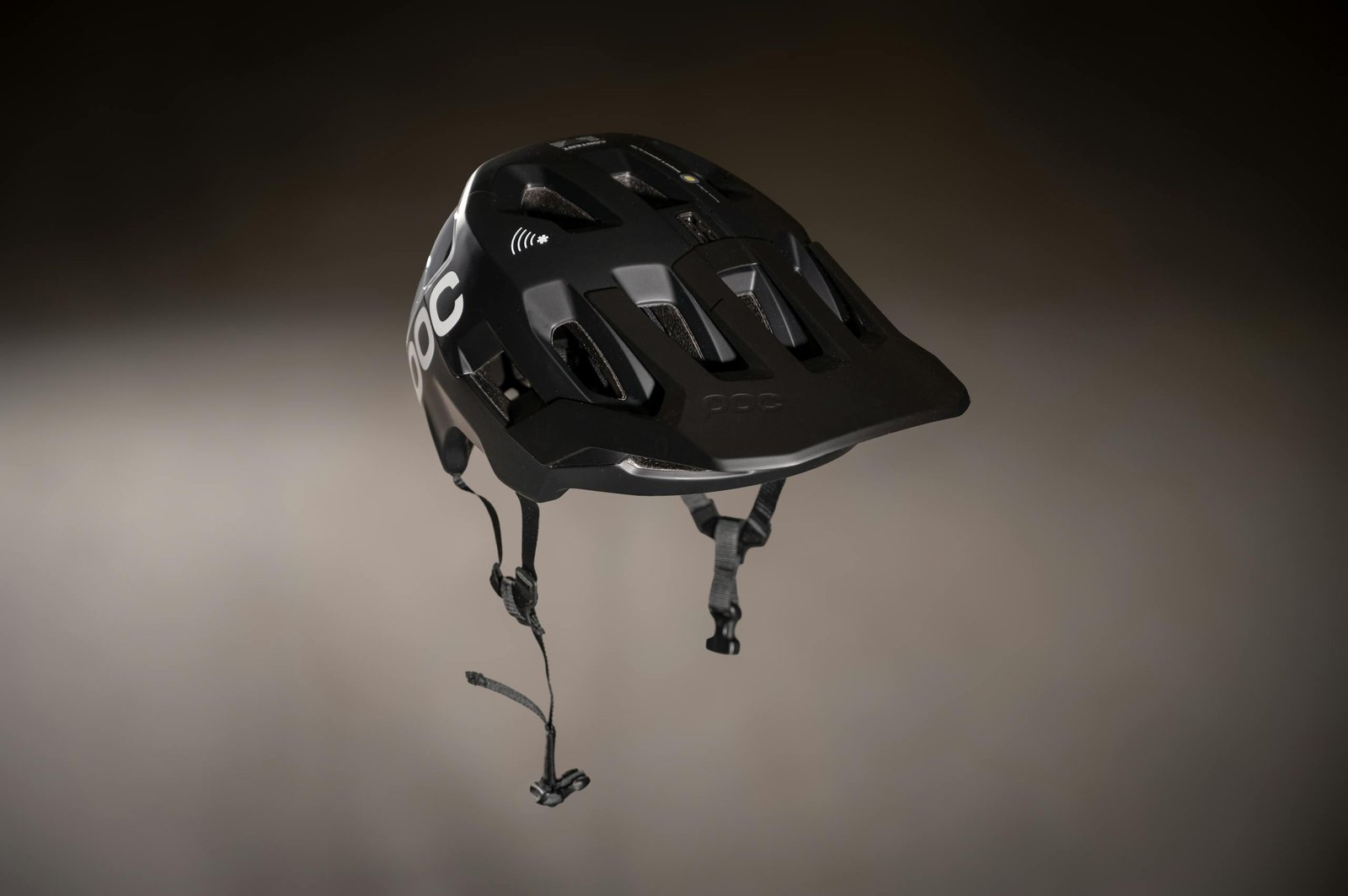Smart Bike Helmets: Tech That Saves Lives in 2025
Imagine a helmet that does more than just protect your head – what if it could also navigate your route, alert you to potential dangers, and keep you connected while riding? Welcome to the world of smart bike helmets in 2025!
These incredible pieces of technology are transforming cycling from a simple mode of transportation into a high-tech experience. According to recent market research, the smart helmet market is projected to grow by 25% in the next year, proving that cyclists are hungry for innovative safety solutions!
What Exactly is a Smart Bike Helmet?
More Than Just Protection
These helmets are essentially smartphones for your head, packed with technologies that go way beyond simple impact protection. The future of cycling safety isn’t about protection – it’s about prevention, prediction, and personalized intelligence. Smart bike helmets in 2025 aren’t just accessories; they’re sophisticated personal safety ecosystems.
Core Technologies
A smart bike helmet isn’t just about padding anymore. It’s loaded with sensors like accelerometers and gyroscopes that can detect crashes in real-time. Imagine a helmet that automatically alerts emergency contacts if you take a serious tumble? That’s not science fiction – it’s happening right now.
Connectivity Capabilities
Bluetooth takes these helmets to the next level. We’re talking built-in speakers for navigation, hands-free calling, and even music streaming. Some models have LED lighting systems that adjust brightness automatically, making night riding safer and more predictable.
Key Technological Differences
Traditional helmets protect your head. Smart helmets protect AND connect you. Built-in cameras can record your rides, bone-conduction speakers let you hear surroundings while enjoying audio, and some even track performance metrics like speed and distance.

Evolution of Safety
A decade ago, a helmet was just a protective shell. Now? It’s a high-tech safety companion. Integrated turn signals, crash detection, automatic emergency notifications – these helmets are revolutionizing cyclist safety.
My Personal Take
The peace of mind from knowing you’re more connected and protected is worth every penny. For tech-enthusiasts and serious cyclists, these aren’t just accessories – they’re becoming essential gear.
My advice? If you’re even slightly tech-curious and serious about cycling, invest in a smart helmet. The extra features might just save your life – or at the very least make your rides a whole lot more interesting.
Essential Features of Smart Bike Helmets
Navigation at Your Ears
Gone are the days of wrestling with phone mounts or getting lost on unfamiliar routes. These helmets now feature turn-by-turn audio directions that stream directly through bone-conduction speakers, keeping your hands on the handlebars and your eyes on the road.
Since bone-conduction technology bypasses the ear canal, sound vibrations are transmitted directly to the inner ear, making them audible to others nearby. This lack of sound isolation may pose concerns for privacy, especially in quiet or crowded environments
Connected Like Never Before
Bluetooth connectivity has transformed cycling from a solo experience to a connected journey. Smart bike helmets syncs seamlessly with any smartphone, allowing you to take calls, stream music, and control your ride without ever touching the phone. It’s like having a personal assistant tucked right into your headgear.
Safety First, Always
Accident detection is where smart bike helmets truly shine. Integrated sensors can recognize sudden impacts or falls, automatically triggering emergency alerts. If you were to crash on a remote trail, the helmet could instantly send my location to pre-selected emergency contacts. That’s not just a feature – that’s potentially life-saving technology. Check out my article on injury prevention for more information.
Lighting Up the Ride
LED lighting systems have become a game-changer for visibility. These aren’t just static lights – they’re intelligent systems that adjust brightness based on ambient light and even include turn signals. Riding at dusk or dawn suddenly feels much safer, with 360-degree visibility that makes you impossible to miss.
The Communication Revolution
Integrated communication tools mean you’re never truly alone on a ride. Noise-canceling microphones and speakers allow crystal-clear communication with fellow riders or taking important calls. It’s connectivity without compromise.
Pro tip: When shopping for a smart helmet, don’t just look at the flashy features. Consider battery life, comfort, and how seamlessly the tech integrates with your cycling style and phone. Not all smart helmets are created equal, and the best one is the one that offers you features you actually use.
Safety Innovations in Smart Bike Helmet Technology
Beyond Basic Protection
When I first started cycling seriously, a helmet was just a hard shell with some padding. Now? Smart helmets are like personal safety guardians that do way more than just cushion your head during a fall. These aren’t your average bike helmets – they’re cutting-edge safety tech.
Impact Protection Reimagined
Advanced impact protection systems have completely transformed helmet design. Modern smart bike helmets use multi-layered materials and adaptive technologies that can actually redistribute force during a collision. Some models use innovative gel-based padding that changes density on impact, providing superior protection compared to traditional foam designs. KRACESS KRS-S1 Matte Black offers a new look that’s stunning!

Crash Detection that Could Save Your Life
Real-time crash detection is where things get seriously impressive. Built-in accelerometers and gyroscopes can instantaneously recognize an accident’s characteristics. If you’re involved in a significant impact, the helmet can automatically trigger emergency protocols.
Keeping Your Loved Ones Informed
Emergency contact notification is a game-changer for solo riders. The moment a serious impact is detected, these helmets can send automated messages to pre-selected contacts. Your emergency contacts get an immediate alert with your location, ensuring help can reach you quickly.
Eyes in the Back of Your Head
Integrated rearview camera systems provide unprecedented situational awareness. These cameras stream real-time video to a smartphone app, essentially giving cyclists a 360-degree view of their surroundings. It’s like having an extra set of eyes watching your back while you ride.
Concussion Monitoring
Perhaps the most groundbreaking innovation is concussion monitoring capabilities. Some smart helmets can now detect the severity of an impact and provide immediate data about potential head trauma. This could be crucial for identifying hidden injuries that might otherwise go unnoticed.
Safety isn’t just about protection anymore – it’s about prevention, awareness, and immediate response. Smart bike helmets are proving that technology can be a true lifesaver.
Choosing the Right Smart Bike Helmet
The Fit Factor: More Than Just Size
Finding the perfect smart helmet can be a lot like dating – it’s all about compatibility. A Proper fit isn’t just about preventing wobbling; it’s about comfort during those long rides.
Battery Life: The Make-or-Break Feature
Battery performance can make or break your smart bike helmet experience. Look for helmets with at least 10-12 hours of battery life and quick charging capabilities.
Pro tip: Always check the actual battery specs, not just the marketing claims.
Device Compatibility Matters
Not all smart helmets play nicely with every smartphone or cycling computer. Some work seamlessly with iOS, others with Android, and some are frustratingly limited. Before investing, check the helmet’s app ecosystem and connectivity options. Nothing’s more annoying than dropping serious cash on a helmet that won’t sync with your devices.

The Price Puzzle
Smart helmet pricing is wild. You’ll find options ranging from $150 to over $500. My advice? Don’t automatically go for the most expensive model. Mid-range helmets between $250-$350 often provide the best balance of features and value. Cheaper models might skimp on sensors, while ultra-expensive ones often have unnecessary bells and whistles.
Weight and Aerodynamics: Performance Matters
Serious cyclists know every gram counts. Modern smart helmets have become impressively lightweight, with many models weighing under 400 grams. Look for designs that balance technology with aerodynamic performance. Those extra vents and sleek contours aren’t just for looks – they can shave precious seconds off your ride times.
Durability: Built to Last
Water resistance and overall durability are crucial. Check IP ratings and material quality. Look for helmets with at least IPX4 water resistance and robust construction that can handle unexpected weather and minor impacts.
Brand Reputation: Do Your Homework
Reputation matters. Brands like Specialized, Garmin, and Livall have solid track records for quality and customer support. Always check warranty terms – a good warranty can save you hundreds if something goes wrong.
My final piece of advice? Try before you buy. No amount of online research beats actually wearing the helmet. What feels perfect for one cyclist might be uncomfortable for another. Your safety and comfort are worth that extra effort. Make sure you are clear on the return policy If purchasing online.
Top Smart Bike Helmet Technologies in 2025
The Sensor Revolution
When I first started tracking cycling tech, sensors were basic. Now? They’re borderline miraculous. Advanced sensor integration in 2025’s smart bike helmets isn’t just about collecting data – it’s about predicting and preventing potential cycling risks before they happen.
AI: Your Personal Safety Guardian
Artificial intelligence has transformed smart helmets from passive protective gear to active safety companions. Machine learning algorithms can now analyze your riding patterns, environmental conditions, and historical movement data to generate personalized safety recommendations. Imagine a helmet that learns your specific riding style and can anticipate potential hazards milliseconds before they occur.
Predictive Safety Technologies
The most groundbreaking development is machine learning-powered accident prediction. These helmets use complex algorithms that combine real-time sensor data with historical cycling information to forecast potential collision risks. It’s like having a predictive safety co-pilot permanently mounted on your head.

Environmental Intelligence
Climate and environment tracking has reached new heights. Modern smart bike helmets can now monitor air quality, temperature variations, UV exposure, and even local atmospheric conditions. For cyclists with respiratory issues or those training in challenging environments, this is can be game-changing technology.
Adaptive Communication Systems
Communication capabilities have exploded. These aren’t just Bluetooth-enabled helmets anymore – they’re intelligent communication hubs. Advanced noise-canceling technologies, context-aware audio filtering, and seamless integration with multiple communication platforms means you’re always connected, but never distracted.
Personalization at its Peak
Personalized safety isn’t a marketing buzzword anymore – it’s a technological reality. Helmets can now create unique safety profiles based on your cycling history, physical condition, and even real-time health metrics. Some models can detect early signs of fatigue or potential health issues during your ride.
Pro tip: While these technologies sound like science fiction, they’re rapidly becoming standard. When shopping for a smart bike helmet in 2025, look beyond basic features. The best helmets will be those that feel like they’re thinking alongside you, not just protecting you.
Practical Applications and Use Cases for Smart Bike Helmets
Urban Survival Gear
As a city cyclist, I’ve learned that survival is about more than just pedaling. Smart helmets have become essential urban survival tools. For commuters navigating complex traffic patterns, these helmets are like having an angel watching your back. Turn signals, rearview cameras, and collision detection transform your daily ride from a potential risk to a safer journey.
Professional Cycling’s New Edge
Professional cyclists aren’t just athletes anymore – they’re data-driven performers. Smart helmets provide real-time performance metrics that can make the difference between winning and losing. Tracking everything from aerodynamic efficiency to physiological stress levels, these helmets have become critical training tools that provide insights impossible to capture just a decade ago.
Mountain Biking’s Technology Companion
Mountain biking used to be about raw skill and intuition. Now, smart helmets offer unprecedented trail intelligence. GPS tracking, emergency location services, and impact detection are lifesavers in remote terrain.
Recreational Riding Reimagined
For weekend warriors and casual cyclists, smart bike helmets make riding more accessible and enjoyable. Navigation features, ride tracking, and integrated communication systems transform recreational rides into connected experiences. You’re no longer just cycling – you’re documenting, sharing, and experiencing your journey in real-time.
Athletic Training Redefined
Specialized athletic training has found a perfect partner in smart helmet technology. Precise performance tracking, biomechanical analysis, and personalized training insights help athletes optimize their training like never before. These helmets are basically portable coaches, providing immediate feedback on technique, exertion, and potential improvements.
Mobility Support Beyond Cycling
Perhaps most exciting are emerging applications for rehabilitation and mobility assistance. Smart helmets are being developed to support individuals with mobility challenges, providing advanced navigation, stability tracking, and emergency support systems. It’s a technology that goes beyond recreation – it’s about empowerment and independence.
Pro tip: The best smart bike helmet is the one that seamlessly integrates into your specific cycling lifestyle. Don’t get caught up in every feature – focus on the technologies that genuinely improve your riding experience.
Final Thoughts
Smart bike helmets aren’t just gear anymore. They’re intelligent companions that make cycling safer, more connected, and ultimately more enjoyable. Whether you’re a professional athlete or a casual weekend rider, there’s a smart helmet designed to elevate your experience.
Smart bike helmets are more than just a technological marvel – they’re a critical step towards safer, more connected cycling. By combining cutting-edge safety features with innovative communication technologies, these helmets are redefining what it means to ride a bike in the 21st century. Whether you’re a daily commuter or weekend warrior, a smart bike helmet could be your most important cycling companion!
Engage, Endure and Enjoy!
Find More Resources on Bicycles
- Smart Bike Trainers: 2024 Best Picks with Features and Benefits
- Mountain Biking for Beginners: Essential Guide to Hit the Trails in 2024
- 3 Best Mountain Bikes of 2024: Complete Buyer’s Guide & Reviews
- How Do You Adjust Bike Brakes? A Step-by-Step Guide for 2024
- Essential Mountain Bike Gear: A Complete Guide for 2024







